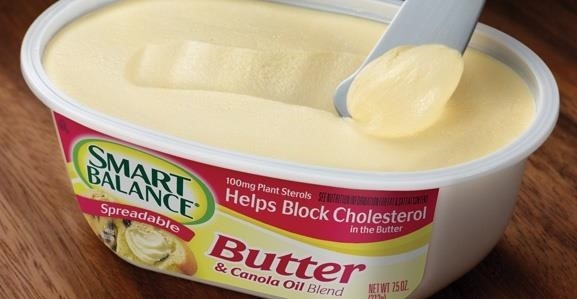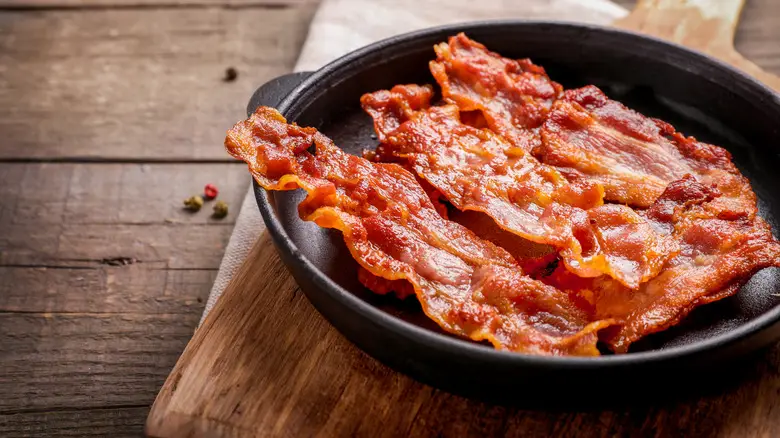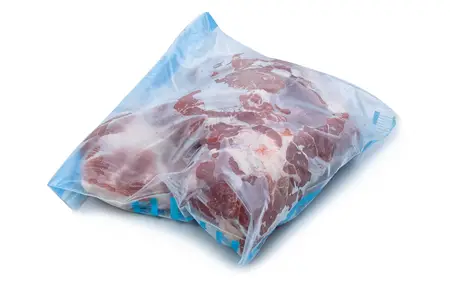Can You Use Spreadable Butter for Cooking?
Butter is a staple in many recipes, from baking to cooking savory dishes. But what about spreadable butter, which has become popular among those who enjoy their toast or bagels in the morning? Can it be used as a substitute for regular butter when cooking or baking? In this article, we’ll take a closer look at spreadable butter and its properties, how it can be used in cooking, and whether it’s a good idea to use it instead of regular butter.
Understanding Spreadable Butter
Spreadable butter is a type of butter that is stored at room temperature and can easily be spread on bread or other foods without needing to be softened first. It’s made by blending regular butter with other ingredients, such as vegetable oil or water, to create a smoother consistency that is easier to spread. Some types of spreadable butter also contain salt or other flavorings, such as herbs or garlic.
There are different types of spreadable butter available on the market, including those made with real butter and those that are made with cream cheese or other ingredients. The latter type typically has less saturated fat than regular butter and may also have additional health benefits from any added ingredients. When choosing spreadable butter for cooking or baking, it’s important to check the label to see if it’s suitable for your needs.
Cooking with Butter
Butter is an essential ingredient in many dishes and recipes, providing flavor, richness, and texture. When cooking with butter, recipes will often call for unsalted butter so that the cook can better control the flavor. Salted butter can still be used in cooking but can affect the taste of the finished dish.
When using salted butter in place of unsalted butter, it’s important to adjust the amount of salt added to the recipe accordingly. Some cooks prefer to use unsalted butter because it allows for more precise control over the final flavor of the dish. Depending on the recipe, using spreadable butter may not have a significant impact on the overall flavor of the dish.
Replacing Regular Butter with Spreadable Butter
The short answer is yes – spreadable butter can generally be used as a substitute for regular butter in most recipes. However, there are some pros and cons to consider when making this substitution.
The Pros
- Spreadable butter is easier to work with when it comes to spreading or melting, making it a handy choice for recipes that require melted butter, such as cookies or pancakes.
- It’s also less likely to burn or scorch in a frying pan or skillet, which can be an issue with regular butter due to its high milk solids content.
- Spreadable butter often contains less cholesterol than regular butter and may have additional health benefits if made with plant-based oils or other healthy ingredients.
The Cons
- Spreadable butter may not have the same depth of flavor as regular butter, which can affect the taste of certain recipes.
- It may also contain additional stabilizers or emulsifiers that are not present in regular butter, which could affect the texture of baked goods or other dishes.
- Since spreadable butter is often made with vegetable oils, it’s not always suitable for high-heat cooking or frying, where regular butter is a better choice due to its higher smoke point.
When deciding whether to use spreadable butter in place of regular butter, it’s important to consider the recipe and the desired outcome. If a recipe calls for a lot of butter, the flavor and texture of the final dish may be affected by using spreadable butter. For smaller amounts, such as for greasing a pan or spreading on toast, spreadable butter is often a convenient choice.
Using Spreadable Butter for Baking
When it comes to baking, using spreadable butter instead of regular butter can affect both the texture and taste of the finished product. Because spreadable butter often contains added oils or water, it can make baked goods softer and more cake-like than using regular butter. This might be desirable in some recipes but not in others.
Spreadable butter can also make cookies spread out more on the baking sheet, which makes them thinner and crispier than if made with regular butter. Again, this might be a desirable outcome depending on the recipe – but if you’re making something like shortbread or pie crusts where you want the dough to hold its shape, regular butter is a better choice.
If you choose to use spreadable butter for baking, there are some tips to keep in mind:
- Check the label to see if the spreadable butter is appropriate for baking or if it’s meant only for spreading.
- If you’re using spreadable butter in a recipe that calls for creaming it with sugar until light and fluffy (such as in many cake recipes), be sure to chill it first so that your mixture doesn’t become too soft or runny.
- If you’re using spreadable butter in place of regular butter in a recipe that calls for melted butter, consider reducing the amount slightly since spreadable butter tends to have more moisture content than regular butter.
- Experiment with different brands and types of spreadable butter to see what works best for your recipes and tastes.
Spreading vs Melting Properties
One key difference between spreadable butter and regular butter is their spreading and melting properties. Spreadable butter is easier to spread or melt, which makes it a convenient choice for certain recipes. Regular butter, on the other hand, can have a firmer texture that doesn’t spread as easily or melt as quickly.
These textural differences can affect how the two types of butter should be used in cooking. For example, if you’re making a grilled cheese sandwich, you might want to use regular butter since it will create a crispier and slightly browned exterior. If you’re making scrambled eggs or pancakes, spreadable butter might be a better choice since it will melt more evenly.
Nutritional Information About Spreadable Butter
As mentioned earlier, spreadable butter often contains less cholesterol and fewer calories than regular butter due to its plant-based oils or other additives. It may also contain additional vitamins or nutrients that aren’t present in regular butter.
However, there are some drawbacks to using spreadable butter from a nutrition standpoint. Depending on the brand and type, it may contain more sodium or added sugars than regular butter. It’s also important to check the ingredient list for any artificial additives or preservatives that could be harmful to your health.
If you’re concerned about the nutritional content of spreadable butter, it’s worth doing some research before choosing a brand or type to use in your cooking or baking. Look for spreads that are low in added sugar and sodium and avoid those that contain high levels of saturated fats or hydrogenated oils.
Shelf Life and Storage Tips
Since spreadable butter is stored at room temperature, it has a shorter shelf life than regular butter. Depending on the brand and type, it may last anywhere from two to four weeks before becoming rancid or stale.
To extend the shelf life of spreadable butter, it’s important to follow proper storage methods. Keep the container tightly sealed when not in use and store it in a cool, dry place away from direct sunlight or heat sources. Avoid dipping your knife or spoon into the container multiple times, since this can introduce bacteria that could spoil the butter more quickly.
Other Uses for Spreadable Butter
While spreadable butter is most commonly used as a topping for toast or bagels, there are many other creative ways to incorporate it into your cooking and baking:
- Use it as a substitute for regular butter in savory dishes like mashed potatoes or roasted vegetables.
- Spread it on top of grilled meats or fish for added flavor and moisture.
- Melt it over popcorn or vegetables for a tasty snack.
- Add it to pasta dishes like carbonara or alfredo for a rich and creamy flavor.
- Use it as a base for dips like garlic herb butter or crab rangoon dip.
Recipes to Try at Home
If you’re looking for some inspiration on how to use spreadable butter in your cooking, here are a few recipe ideas:
Garlic Herb Butter
- 1/2 cup unsalted spreadable butter
- 2 cloves garlic, minced
- 1 tablespoon finely chopped fresh parsley
- 1 tablespoon finely chopped fresh thyme
- 1/2 teaspoon salt
- 1/4 teaspoon black pepper
Combine all ingredients in a bowl and mix well. Use as a spread for bread, a topping for grilled meats or fish, or as a seasoning for roasted vegetables.
Baked Eggs with Spinach and Feta
- 6 eggs
- 2 tablespoons unsalted spreadable butter
- 2 cups fresh spinach leaves
- 1/4 cup crumbled feta cheese
- Salt and pepper to taste
Preheat oven to 375°F. Grease a baking dish with the spreadable butter. Arrange the spinach leaves in the bottom of the dish. Crack the eggs over the top of the spinach. Sprinkle with salt, pepper, and feta cheese. Bake for 15-20 minutes or until eggs are set. Serve immediately.
Conclusion
In conclusion, spreadable butter can be a convenient option when cooking or baking certain dishes, but it’s important to consider its properties and nutritional content before making substitutions. Depending on the recipe and desired outcome, spreadable butter may be an effective replacement for regular butter – but in other cases, it may not offer the same depth of flavor or texture that regular butter provides.
If you’re considering using spreadable butter in your cooking or baking, experiment with different brands and types to see what works best for your needs. And don’t be afraid to get creative – spreadable butter can be used in many ways beyond just smearing it on your morning toast!
Frequently Asked Questions
Is spreadable butter suitable for cooking?
Yes, spreadable butter can be used for cooking. It’s a great substitute for regular butter as it has a lower moisture content, making it ideal for sautéing, frying, and baking.
Can spreadable butter be melted?
Yes, spreadable butter can be melted. It’s perfect for making sauces and gravies as it melts quickly and evenly.
What dishes can I make with spreadable butter?
You can use spreadable butter in a wide range of dishes, including cakes, cookies, sauces, stews, soups, and even grilled cheese sandwiches. Its smooth texture makes it easy to blend into any recipe.
Is there a difference between spreadable butter and regular butter?
Spreadable butter is made from regular butter that has been softened or blended with other ingredients, such as canola oil or water. The main difference is the texture and the ease of use. Spreadable butter is softer and more spreadable straight from the fridge compared to regular butter.







